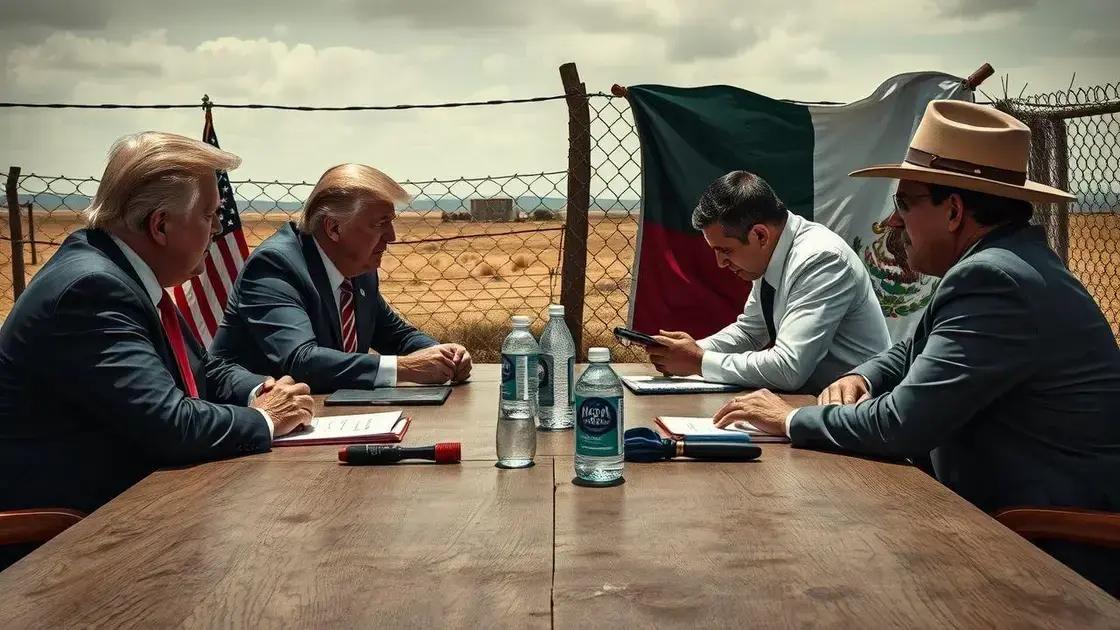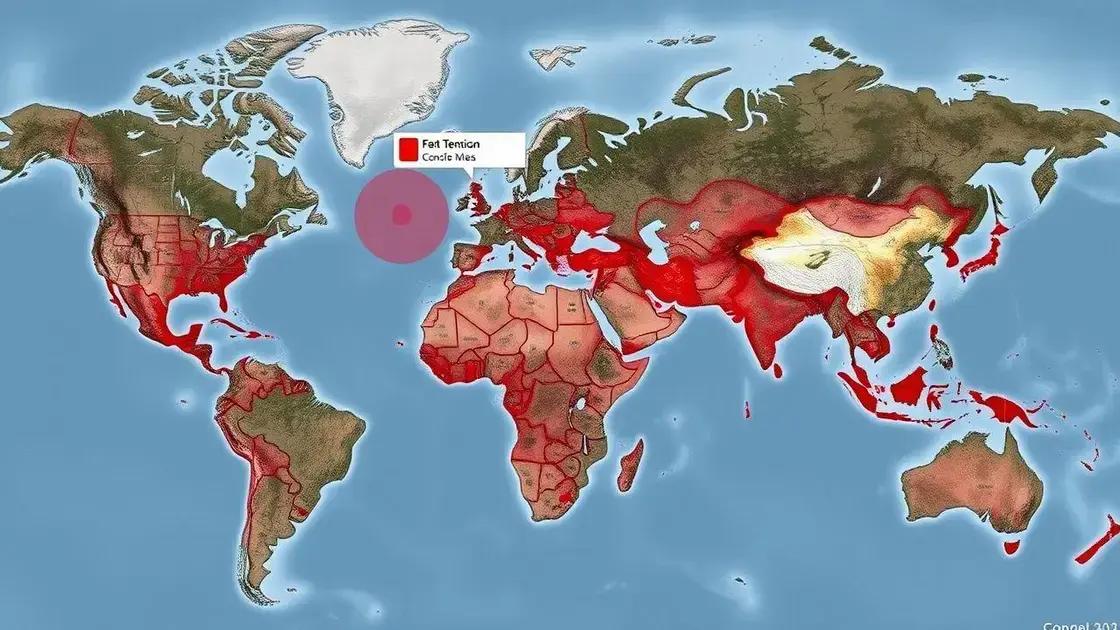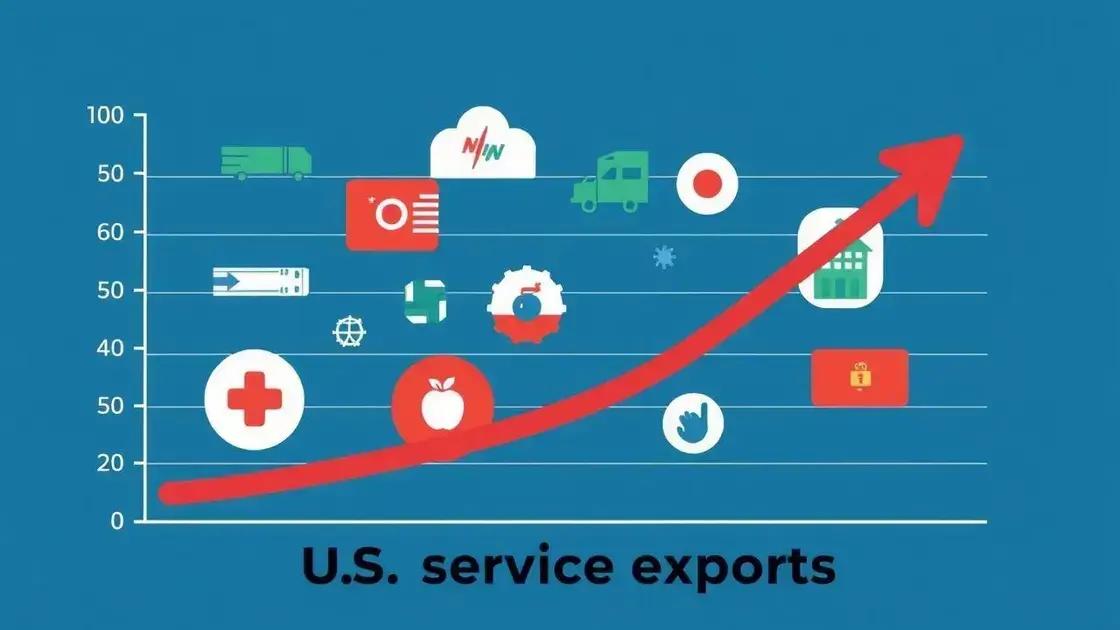Trump escalates tariff threats in ongoing Mexico water dispute

Trump escalates tariff threats in ongoing Mexico water dispute, creating tensions over trade and water allocation, necessitating communication and cooperation between the two nations to address shared challenges effectively.
Trump escalates tariff threats in ongoing Mexico water dispute as tensions rise over water allocation issues. This situation has not only sparked heated debates but could also reshape trade dynamics significantly.
Understanding the water dispute between the US and Mexico
The water dispute between the US and Mexico revolves around the allocation of water from the Colorado River. This river serves as a vital water source for both countries, especially for agricultural needs. Over the years, agreements have been made concerning water distribution, but challenges continue to arise, resulting in ongoing conflicts.
Key Issues in the Dispute
Several key factors contribute to the complexity of this situation. These include:
- Population Growth: Rising populations in border areas increase demand for water.
- Drought Conditions: Reduced water levels lead to heightened tensions over supply.
- Legal Agreements: Existing treaties may not effectively address current needs.
- Environmental Concerns: Both countries face ecological challenges related to water management.
As we examine these factors, it becomes clear that the relationship between the US and Mexico regarding water is not just about quantity, but also about equity and cooperation. Efforts are needed to ensure that both nations can access adequate water supplies while respecting mutual agreements.
Understanding the historical context of this dispute is also crucial. Agreements reached in the past, such as the 1944 Water Treaty, were designed to manage water sharing but have faced challenges due to changes in climate and population dynamics. The impact of these agreements can be seen in the ongoing negotiations today.
Importance of Continued Dialogue
Continued dialogue between the US and Mexico is essential for resolving current disputes. Regular meetings and discussions can help address concerns and develop strategies to better manage water resources. Collaboration could prove beneficial not only for local communities but for the ecosystems that rely on the Colorado River as well.
The implications of tariff threats on trade relations
The implications of tariff threats on trade relations between the US and Mexico are significant. As tariffs increase, the cost of imported goods rises, which can lead to higher prices for consumers. This situation can strain economic ties and create uncertainty in the markets, affecting businesses on both sides of the border.
Impact on Businesses
Businesses rely on stable trade relations to thrive. Tariffs can disrupt supply chains and lead to:
- Increased Costs: Higher tariffs mean higher costs for raw materials and goods.
- Reduced Profit Margins: Companies may struggle to maintain their profit margins as expenses rise.
- Market Uncertainty: Businesses face uncertainty, making it harder to plan for the future.
- Job Losses: Some companies may be forced to downsize or lay off workers in response to increased costs.
These factors contribute to a tense economic atmosphere. Companies must adapt to changing regulations and tariffs, often leading to a shift in trading practices. For instance, some firms may seek alternative suppliers or markets to mitigate the impacts.
Effects on Consumers
The direct consequences of tariffs are also felt by consumers, who may face:
- Higher Prices: Imported goods become more expensive, affecting household budgets.
- Limited Choices: Tariffs may force stores to reduce the variety of products available.
- Decreased Spending Power: As prices rise, consumers may cut back on spending in other areas.
This tug-of-war in trade relations affects not just businesses and consumers, but the overall economy. Overall, the implications of tariff threats extend beyond simple economic metrics. They influence public sentiment, political debates, and future relations between nations.
Historical context of US-Mexico water agreements

The historical context of US-Mexico water agreements is essential to understanding current conflicts. These agreements have been shaped by years of negotiations, treaties, and changing environmental conditions. The relationship between the two countries regarding water resources has evolved, especially as both nations rely heavily on shared rivers.
Key Agreements
Several key treaties have defined water relations between the US and Mexico:
- The Treaty of 1944: This agreement established the guidelines for sharing water from the Colorado River between both countries, allocating specific amounts to each nation.
- The Minute 319: Adopted in 2012, this agreement addresses issues related to water shortages and outlines temporary measures for water conservation.
- The Minute 323: A follow-up to Minute 319, this agreement from 2017 focuses on cooperation for water management and further conservation efforts.
These agreements showcase the commitment to cooperation and highlight the importance of maintaining a fair distribution of resources. However, they also reveal the tensions that arise when water levels fluctuate due to drought or increased demand.
Challenges Over Time
Throughout history, both nations have faced challenges that have impacted these agreements. Changes in climate, population growth, and agricultural needs all play a role. The drought conditions seen in recent years have heightened the urgency for effective water management and adherence to treaties.
As discussions continue, it’s crucial for both countries to honor their historical commitments while also adapting to new realities. The future of water management will depend on collaboration and understanding of the shared challenges they face.
Responses from Mexico and the international community
Responses from Mexico and the international community regarding the ongoing water dispute and tariff threats highlight the complexity of the situation. Mexico has expressed deep concerns about the impact of tariffs on trade, particularly how it affects agricultural exports. These tariffs can hinder the economy and create challenges for farmers who depend on exporting produce to the US.
Mexico’s Stance
In reaction to the tariff threats, Mexican officials have emphasized the need for dialogue. They advocate for negotiation over punitive measures. Key responses include:
- Diplomatic Engagement: Mexico’s government has been proactive in seeking discussions to address the water issue and urge a collaborative approach.
- Public Campaigns: Mexican leaders are using media outlets to inform the public and rally support against unilateral tariff increases.
- Legal Measures: Mexico has indicated that they may consider legal action to defend their interests under international trade laws.
This strategic response shows Mexico’s commitment to safeguarding its economic and environmental interests while maintaining open channels of communication with the US.
International Reactions
The international community is closely monitoring these developments. Other countries depend on stable trade relations with both the US and Mexico, as the two nations are key players in North American trade. Responses from various stakeholders highlight concerns over:
- Global Trade Dynamics: Tariffs can disrupt trade flows beyond just the US-Mexico relationship, affecting partners worldwide.
- Environmental Impact: Environmental groups emphasize the need for sustainable water management practices that consider ecosystems.
- Support for Collaboration: Many countries advocate for negotiated solutions rather than escalating tensions through tariffs.
Such responses reflect a broader understanding of how tariff threats can reverberate throughout international trade relations and the importance of addressing shared water challenges collaboratively.
Future of negotiations: What’s at stake?
The future of negotiations between the US and Mexico is crucial, and understanding what’s at stake can shape outcomes. As both countries face challenges related to water resources and trade, their ability to negotiate effectively is vital. Each party has its interests, but cooperation is essential to reach beneficial agreements.
Key Stakeholders
Several groups have significant stakes in the negotiations:
- Agricultural Producers: Farmers depend on consistent water supply and access to markets on both sides of the border.
- Government Officials: Leaders in both nations aim to protect national interests while promoting bilateral relations.
- Environmental Groups: These organizations advocate for sustainable water management practices and conservation efforts.
- Trade Associations: These bodies work to ensure trade remains strong and beneficial for both countries.
Negotiations will involve balancing these diverse interests. The potential for agreements can either strengthen ties or lead to further tension, making it critical for all parties to express their needs clearly.
Challenges Ahead
Looking ahead, both nations face specific challenges that will impact negotiations. As climate change continues to affect water availability, it is increasingly vital to consider the effects of drought and water scarcity. Additionally, political pressure can complicate discussions, as both sides navigate public opinion and prioritize domestic agendas.
Furthermore, the impact of tariffs may also weigh heavily on negotiations. Heightened trade tensions can spill over into discussions about water rights, complicating the path toward compromise and cooperation. The stakes are high, and thus, finding common ground will require diplomacy and innovative solutions.
In this evolving landscape, all parties must remain committed to dialogue and collaboration. The outcomes of these negotiations could have significant ramifications for trade, water management, and bilateral relations in the coming years.
FAQ – Questions about the US-Mexico Water Dispute and Trade Relations
What are the main issues in the US-Mexico water dispute?
The main issues include water allocation, drought conditions, agricultural needs, and legal agreements that affect how each country shares resources.
How do tariffs impact trade relations between the US and Mexico?
Tariffs increase costs for imported goods, leading to higher prices for consumers and potentially straining economic ties between the two nations.
What steps are Mexico taking in response to tariff threats?
Mexico is seeking dialogue and negotiation to resolve issues, while also considering public campaigns and legal actions to protect its interests.
Why is international attention important in the US-Mexico negotiations?
International attention matters because trade relations affect not only the US and Mexico but also other countries that rely on stable trade dynamics in North America.






